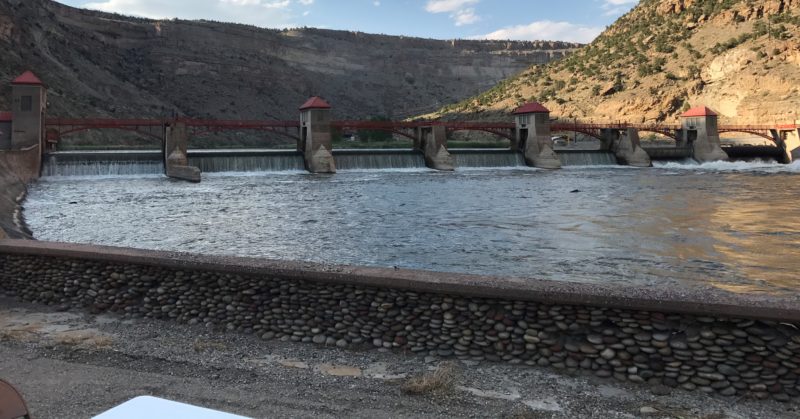If you’ve ever worked in Colorado river management, you’ve heard of this section of the Colorado River, which starts east of Grand Junction and stretches to the confluence with the Gunnison River just west of town. It’s famous because it represents a vulnerable part of that mighty river, where, because of such high demand on its supply, it’s commonly drawn down to dangerously low levels.
The Southwestern U.S. relies on the Colorado River, that thread of blue that works its way toward the Gulf of California and provides for the lives and livelihoods of 40 million people along the way. The fact that there is a stretch of river, not at the end of it but near its beginning, that can have so little water that it struggles to support its native fish is surprising to many non-experts, but it isn’t the only place this happens.
The 15-Mile Reach is home to four federally endangered fish species that Colorado is working to recover – the Colorado Pikeminnow, Humpback Chub, Bonytail, and Razorback Sucker. Because it’s on the Colorado main stem, and because of the biological resources it contains, people have been trying to keep this stretch of river flowing at healthy levels for a long time.
A few years ago, the Water Trust and its partners, Orchard Mesa Irrigation District (OMID) and Grand Valley Water Users Association (GVWUA), began working on an idea that would accomplish just that. There is water upstream that could be used at critical times when the 15-Mile Reach needs it, mostly stored in reservoirs. The tricky part is that Colorado water law does not allow it to be released to help the 15-Mile Reach without proof that the water will get used for some sort of “beneficial use” downstream, and there are limited options for doing so while watering this stretch of river. The three partners, along with the federal Bureau of Reclamation, decided to use the water for power generation at a hydro-electric plant, providing the necessary “beneficial use.” By helping to fund the plant’s renovation, we will be able to release water from upstream reservoirs during times of the year when the river is dangerously low. First, the newly expanded hydro-electric plant will use the water, and then it will release the water to continue downstream to where it is needed in the 15-Mile Reach.
Thanks to the creative thinking of our Water Trust team, OMID and GVWUA, and the Walton Family Foundation’s encouragement and support, we are excited to announce that we just closed on legal agreements last week, and expect to release water to flow down the river later this year!
This is the kind of project the Water Trust is great at: A stretch of river is in critical need, but Colorado water law is complicating restoration efforts. The Water Trust is brought in, and thanks to the flexible thinking of our community partners and our own experience in legal and engineering problem solving –a solution is found that makes sense for everyone. This is a really big deal:
- It is the biggest project we’ve ever done. We’re talking thousands of acre-feet a year (an acre foot is 325,000 gallons) to be sent downstream.
- This kind of large scale project, in which our scarce water resources are shared with the environment, is the holy grail of our work. We’ve helped dozens of rivers while working with, rather than against, farmers, anglers, river-runners, and other fellow Coloradans. Most of our projects are small in volume. But, with our Yampa River project and this new Colorado River project, we’re changing that.
- With scale, though, comes cost. The 15-Mile Reach project will cost us upwards of $400,000 to complete. But it is so worth it. With this project, the Water Trust is entering into a new era; an era of larger scale, high impact projects that will protect rivers and keep our fish and environment thriving.
The challenges are huge, but Coloradans are a resourceful people. Our partners on this project, OMID, GVWUA and the Bureau, have stepped up. We’ll make it work … by working together.
